Nadir J.
See all reviews
Learn Econometrics the Practical Way – Hands-On Python Skills for Real-World Data Analysis and Modeling






Skill level:
Duration:
CPE credits:
Accredited
Bringing real-world expertise from leading global companies
University of Tuebingen
Description
The introduction provides a concise overview of the course's aims and scope. The course is self-contained, including a brief introduction to Python with a focus on Pandas. Then we move into Data Wrangling, focusing on data imports, merging and transformations. Then, we explore our data using Descriptive Analysis. Section 5 introduces Regression Analysis. We will learn that many assumptions are made in the process of regression analysis. Section 6 explores violations of assumptions, including Heteroskedasticity and endogeneity. Tests and methods to address the issues are discussed in detail. Section 7 introduces panel data models, including fixed and random effects. Then, we move on to binary choice models, i.e., explaining yes-or-no events or decisions. We conclude with a section on model specification and parameter stability.
After completing this course, you will be able to use Python for Econometric Analysis with confidence. You will develop a solid understanding of applied Econometrics, including data wrangling, outlier detection, and regression analysis.
This course will be more than sufficient for most applied work. I promise that it is highly applied and provides hands-on experience with numerous practical applications. Enjoy the Joy of Econometrics!
Curriculum
This section provides a beginner-friendly introduction to Python with a focus on data handling and analysis using Pandas. If you are familiar with Python, you may skip this section.
This section provides a beginner-friendly introduction to Python with a focus on data handling and analysis using Pandas. If you are familiar with Python, you may skip this section.
Handling data is a crucial step in Econometrics. We focus on data structures, merging, and identifiers.
Handling data is a crucial step in Econometrics. We focus on data structures, merging, and identifiers.
It is essential to detect outliers that bias your empirical models. Additionally, we need to understand how to handle missing values.
It is essential to detect outliers that bias your empirical models. Additionally, we need to understand how to handle missing values.
Regression analysis is the predominant tool in Econometrics. We provide a detailed introduction to OLS estimation and interpretation of results.
Regression analysis is the predominant tool in Econometrics. We provide a detailed introduction to OLS estimation and interpretation of results.
In regression analysis, several assumptions are made that need to be tested. This section provides solutions for addressing many standard model assumption violations.
In regression analysis, several assumptions are made that need to be tested. This section provides solutions for addressing many standard model assumption violations.
This section covers fixed and random effects, as well as the Hausman test, which is used to distinguish between these two specifications.
This section covers fixed and random effects, as well as the Hausman test, which is used to distinguish between these two specifications.
To capture yes-no decisions or events, we require a different set of tools. This section covers Maximum-Likelihood estimation, model predictions, and validation.
To capture yes-no decisions or events, we require a different set of tools. This section covers Maximum-Likelihood estimation, model predictions, and validation.
How do we know that our empirical model is the best? Well, we need to test. This section covers various techniques used in selecting the optimal model.
How do we know that our empirical model is the best? Well, we need to test. This section covers various techniques used in selecting the optimal model.
Free lessons
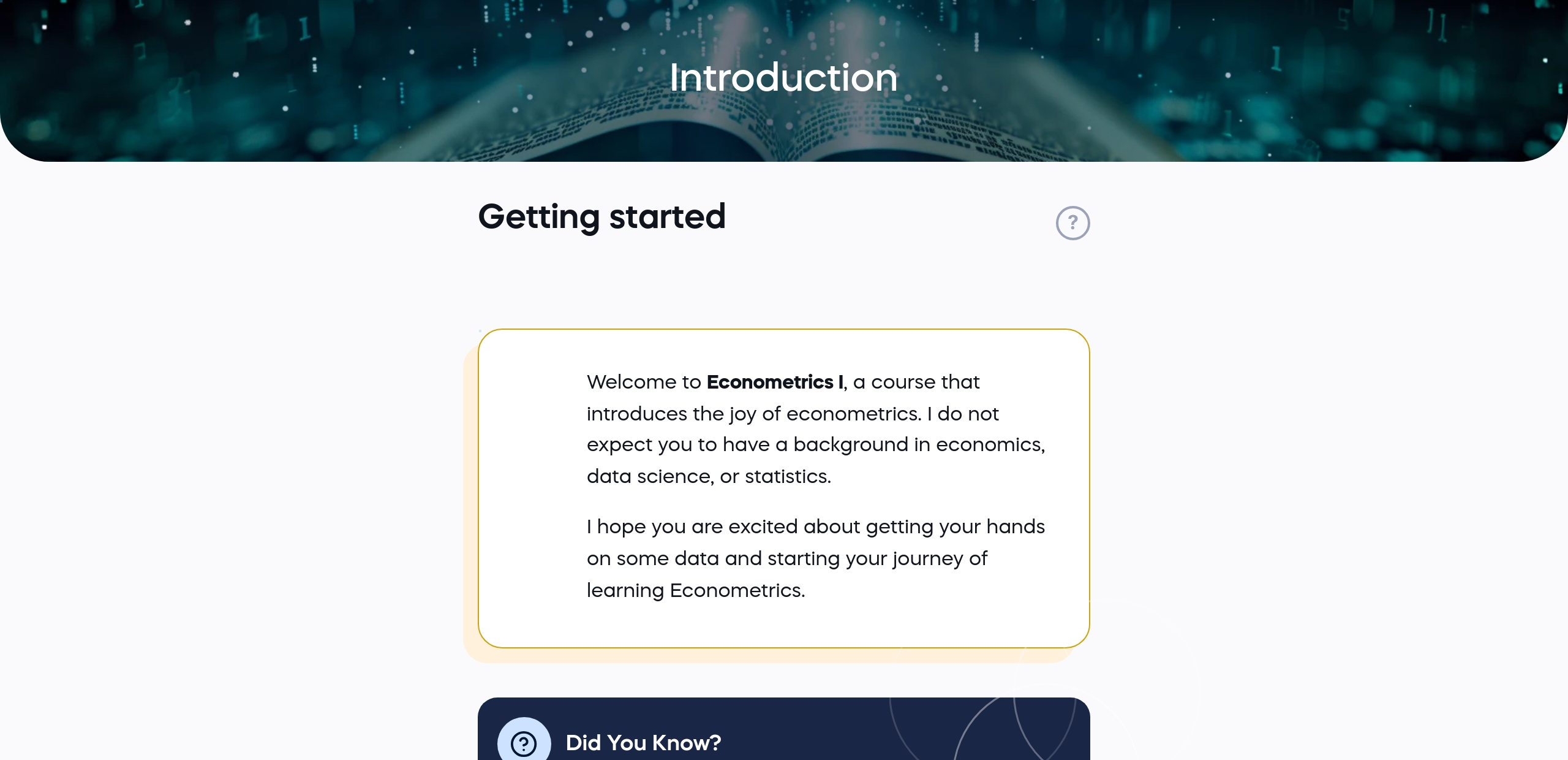
1.1 Getting started
1 min

1.2 Your instructor
1 min
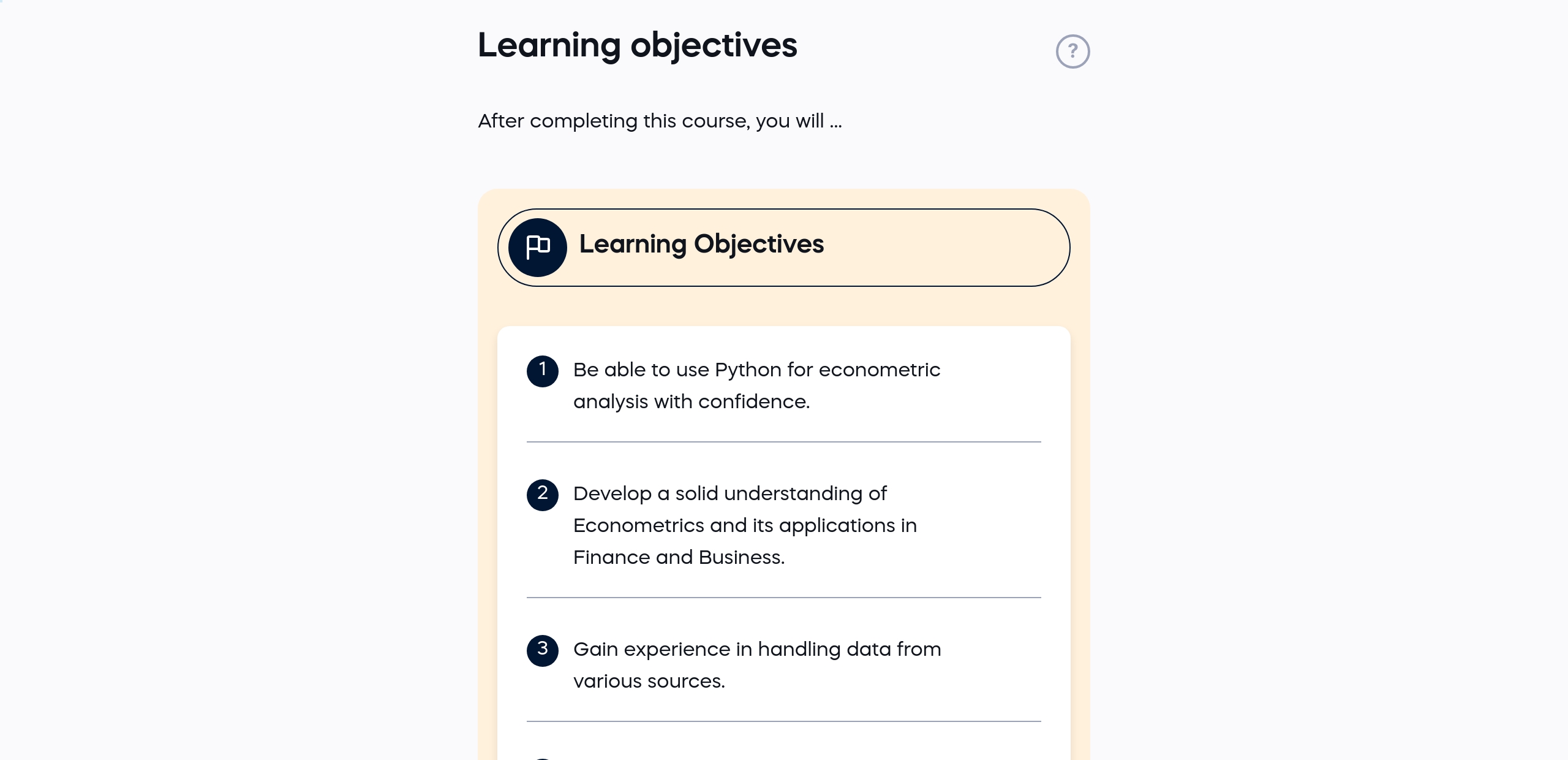
1.3 Learning objectives
1 min
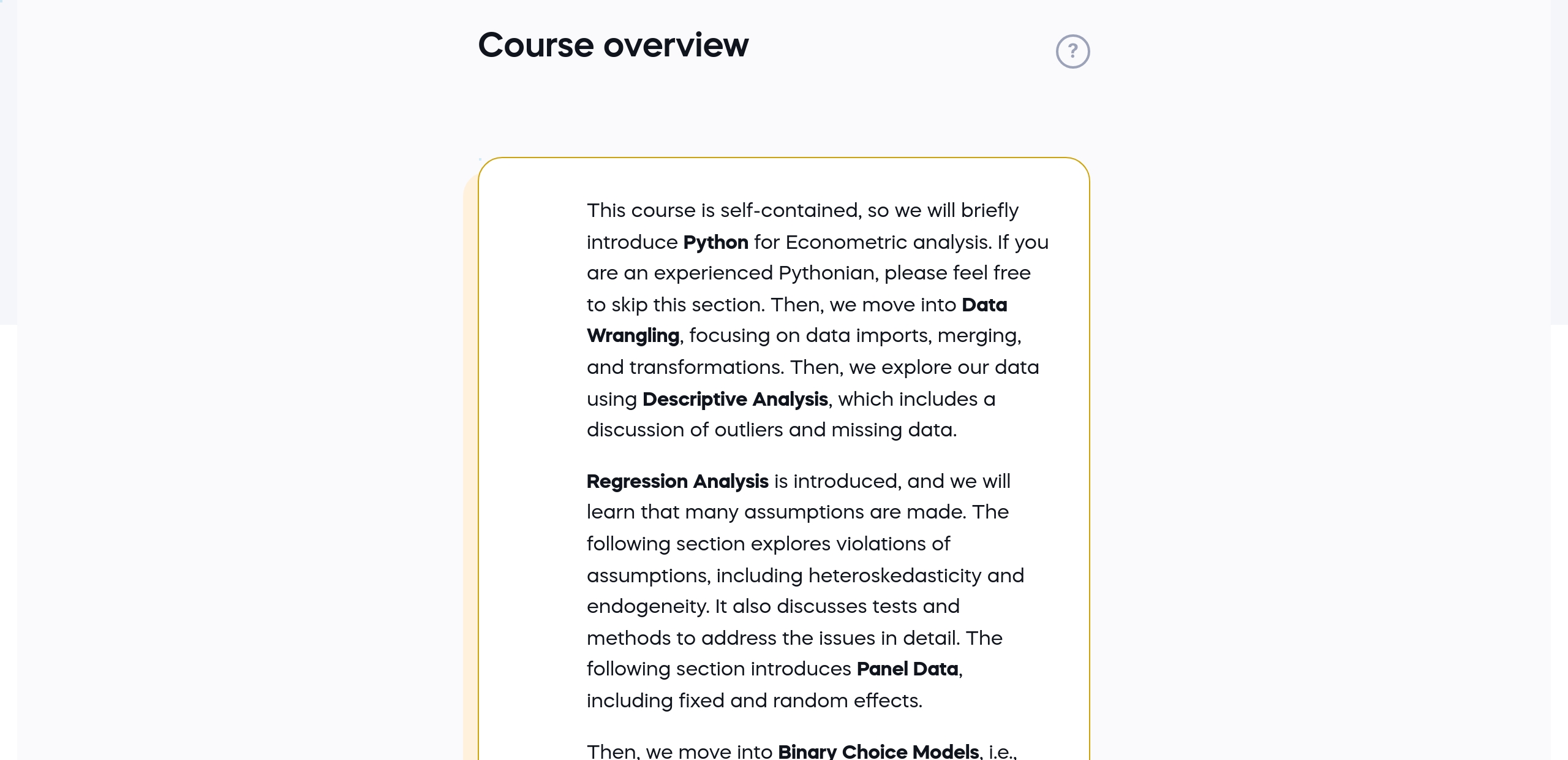
1.4 Course overview
2 min

1.5 What is Econometrics?
1 min

1.6 Machine learning vs Econometrics
1 min
$29,000
average salary increase
9 in 10
people walk away career-ready
#1 most reviewed
ACCREDITED certificates
Craft a resume and LinkedIn profile you’re proud of—featuring certificates recognized by leading global
institutions.
Earn CPE-accredited credentials that showcase your dedication, growth, and essential skills—the qualities
employers value most.





Certificates are included with the Self-study learning plan.
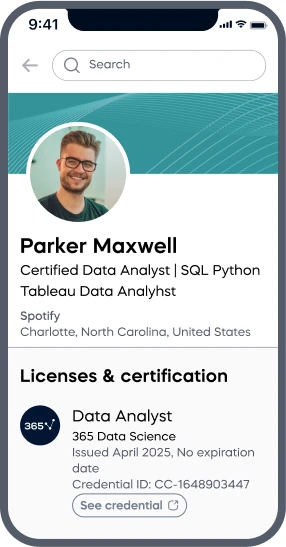
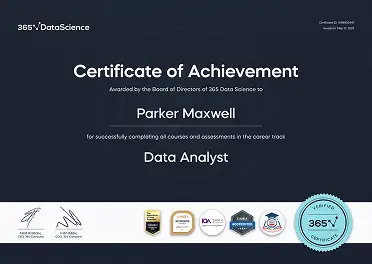
How it WORKS